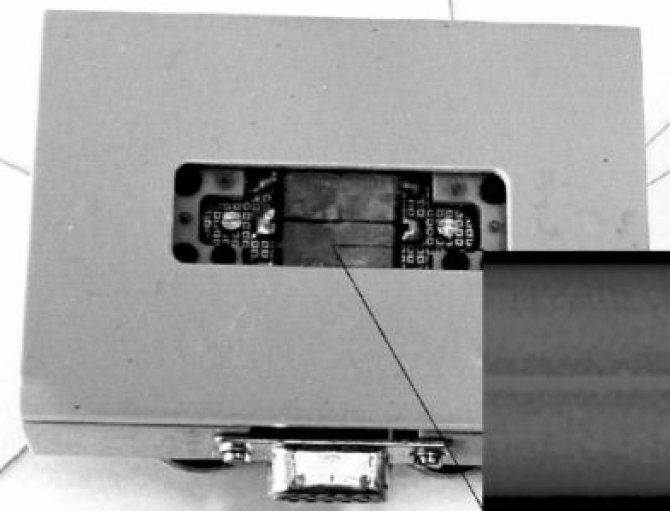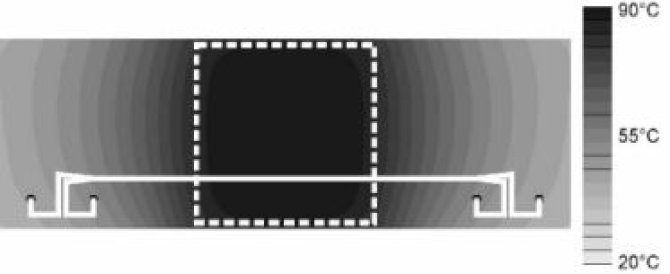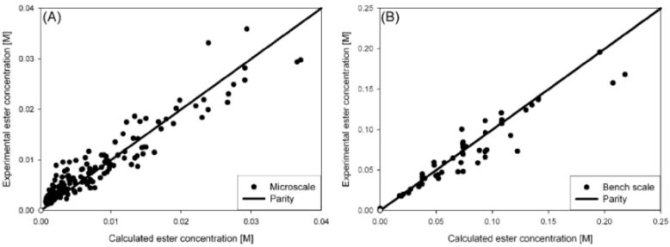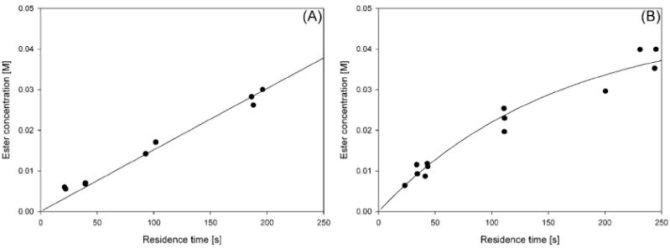Enzymatic synthesis and separation in microreactors
Introduction
For a long time chemical and enzymatic reactions have been carried out in reactors ranging from a few milliliters to m3’s in volume. Scale up is difficult due to inhomogeneity problems like concentration and temperature gradients. A few decades ago microtechnology was introduced, at first in the field of electronics now also in the field of (bio-) chemistry.
In a partnership with organic chemists from WUR and the University of Nijmegen and electrical and computer engineers from IMS Fraunhofer Institut Duisburg we will develop new methods of doing biocatalysis on chip in an integrated way.
Temperature control in a micro reactor chipholder.
Within this research, a micro-scale processing system is designed to enable flexible processing. This system includes hardware, such as microfluidic chips, its chipholder, and a controller unit, as well as process control software.


Fig 2. Result of CFD simulations showing the temperature over the chip at fluid level, dashed box indicates position of heater, lines indicate position of fluid channels.
To determine the temperature of fluid in a heated micro reactor, Rhodamine B, a temperature dependent fluorescent molecule, was used. An aqueous solution of Rhodamine B was pumped through a glass microfluidic chip (fig. 1). Microscopic pictures were taken and analyzed to determine the fluorescent signal. This signal was then correlated to the temperature of the fluid. Different processing circumstances such as fluid flow rate and movement of air were varied and their effect on steady state and transient temperature behavior was observed. The results were compared to results from Computational Fluid Dynamics calculations (fig. 2).
We showed that at normal operating conditions, such as moderate movement of air around the system and moderate fluid flow through the chip, have no significant effect on the temperature at reaction positions. Chipholder design proved to have a much larger effect.
Conclusion
Our findings indicate the importance of thermal aspects in the design of process equipment on such a small scale. The results can be used to construct guidelines for designing chips and chipholders with robust temperature control possibilities.
Comparison of lipase-catalyzed esterification on micro and bench scale.
The kinetic parameters of a reaction, know to follow a Ping Pong Bi Bi mechanism with alcohol inhibition, were determined on micro and bench scale. The effect of temperature on activity and denaturation was also investigated.
Lipase B from Candida antarctica was used to catalyze the esterification of 1-butanol and propionic acid in a water/decane two phase system. On bench scale this was done by end-over-end rotation. On micro scale, a 1.18 m long micro channel with a cross section of 40 x 85 µm facilitated residence times from 45 seconds to 10 minutes. The initial enzyme activity at different substrate concentrations was determined by measuring the ester concentration (product) over time.
The kinetic parameters of this reaction were determined on both scales and showed no significant differences. Parity plots of experimental versus model results are shown in figure 3. The activation energies of activation and denaturation were determined on bench scale and then applied on micro scale. Experimental results from the micro scale were compared to model results (figure 4) and showed nice correlation.


Conclusion
No significant differences between parameters on both scales were found. Therefore, parameters found on either scale can be used for the other scale. Enzyme kinetic parameters can be determined on a micro scale, with very low consumption of reagents and catalyst, and then be applied to bench scale. This can reduce the cost of optimizing enzyme processes by downscaling.
Comparison of two-phase lipase-catalyzed esterification on micro and bench scale. Swarts, J.W., Vossenberg, P., Meerman, M.H., Janssen, A.E.M., Boom, R.M. (2007) Biotechnol. Bioeng. 99(4): 855-861 Abstract : Full Text
Temperature effects during practical operation of microfluidic chips. Swarts, J.W., Janssen, A.E.M., Boom, R.M. (2008) Chem. Eng. Sci. 63: 5252-5257. Full Text